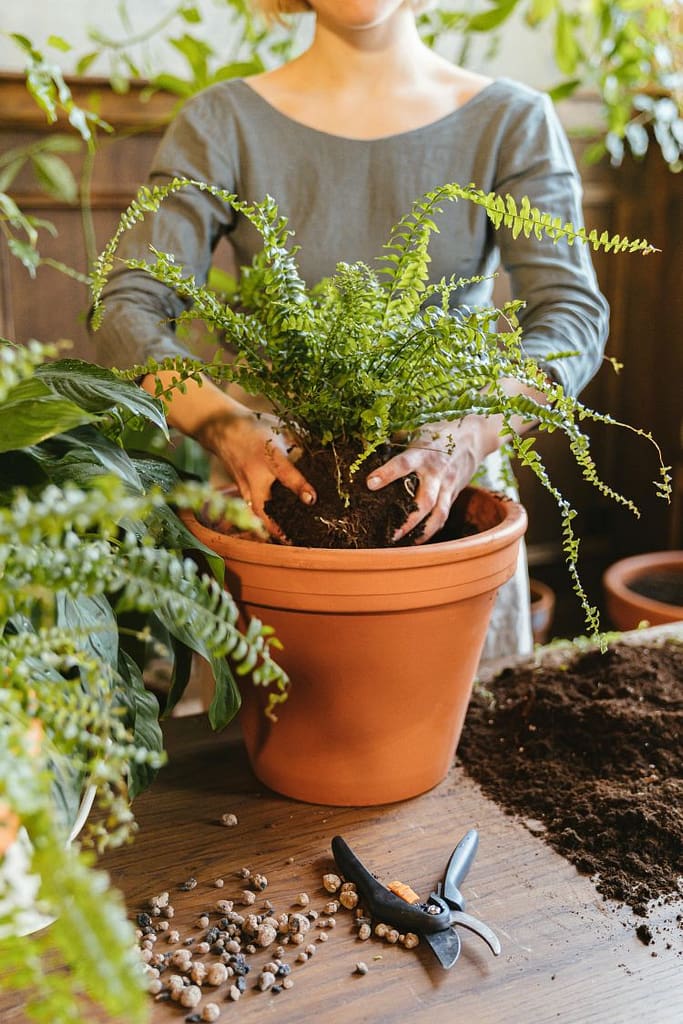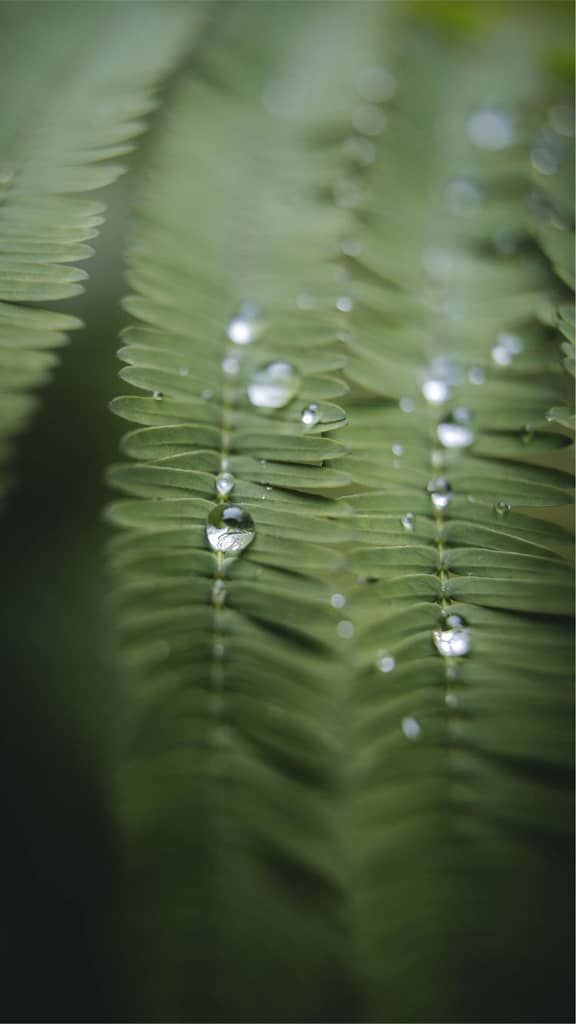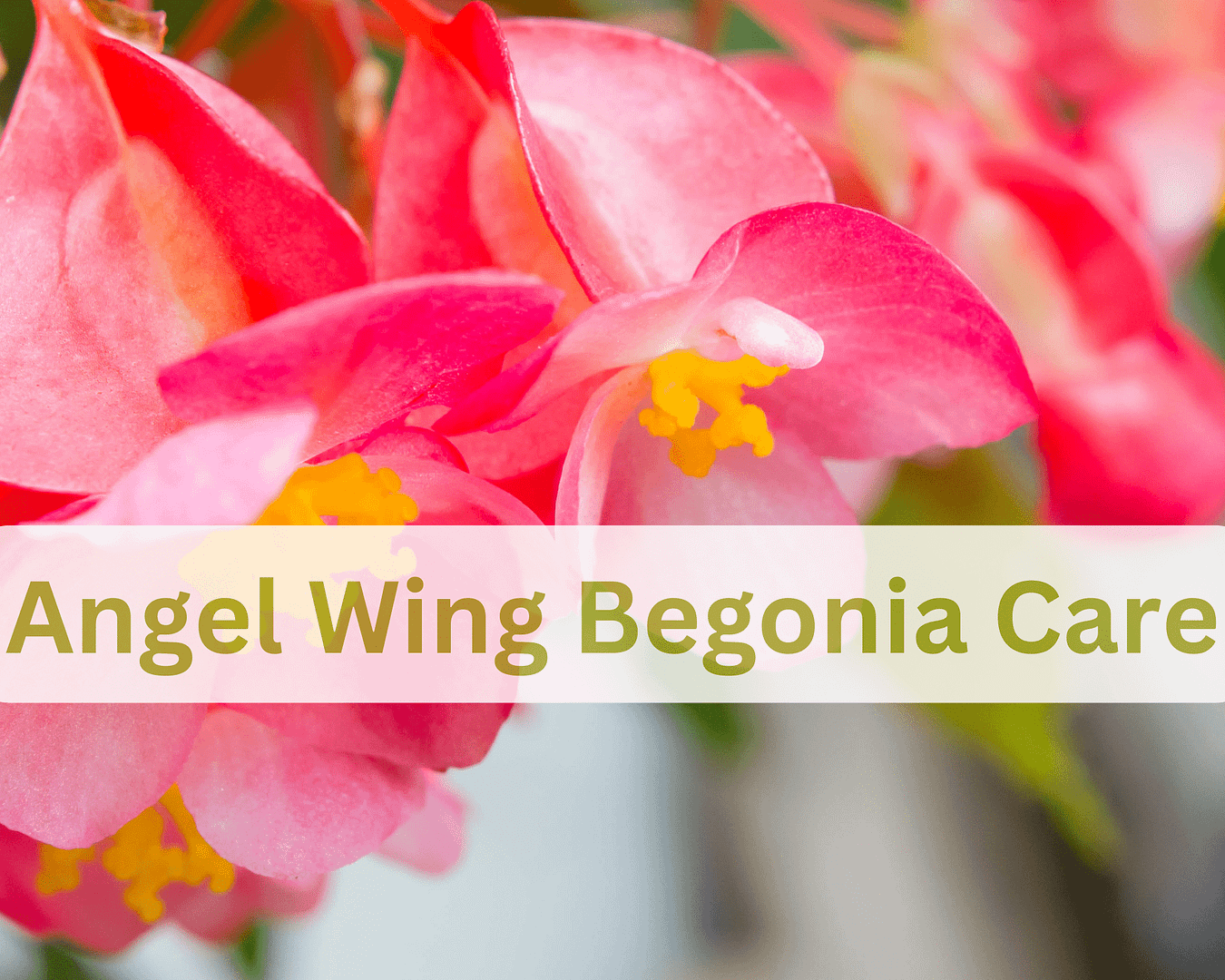This post may contain affiliate links. As an Amazon Associate we earn from qualifying purchases.
If you want to grow this classic, you’ll need to learn about Boston fern care. It’s easy; we promise!
You may or may not recall the 1970s and the houseplant craze that swept the nation. Although there was no Instagram on which to show off the plant hoard, no self-respecting household was without at least one macramé plant hanger and one Boston fern (Nephrolepis exaltata “Bostoniensis”).
Today, houseplant tastes run to the rare and expensive species and cultivars. It’s not at all unusual to see plants selling for nearly $1,000 and people to buy them.
The Boston fern isn’t among them, but that’s ok. It’s still one of the most popular, attractive and easy-care plants to grow indoors – IF you understand its care requirements.
Here is what you’ll need to provide excellent Boston fern care
- Commercial soilless potting mix
- Peat moss or coco coir
- Perlite
- ½-inch pine bark chunks
- Humidifier
- Fertilizer
- Garden snips
- Sharp knife or scalpel
 Potting or repotting the Boston fern – it’s all about the soil
Potting or repotting the Boston fern – it’s all about the soil
The ideal soil for the Boston fern is one that is well-aerated, drains well but doesn’t dry out too quickly. Leonard Perry, extension professor at the University of Vermont Extension recommends a soilless mix with 50 percent peat moss.
If you have problems with fungus gnats, you may want to experiment with a peat-less mix, since the little pests are particularly attracted to peat (use coco coir instead).
One DIY recipe we found is a combination of 30 percent coco coir, 30 percent coarse-grade perlite and 40 percent pine bark.
If this is the first time you’ve re-potted a plant, you’ll find the process a bit messy but quite easy. The pros at Penn State Extension offer a handy walkthrough.
How much light does a Boston fern need?
We’ve found that the cause of some of the most frequent problems Boston fern growers complain about is light. Getting this aspect of growing correct solves so many problems.
Boston ferns do best in bright, indirect sunlight, such as it will receive if you hang it or place it near a north-facing window.
Choose a spot for the fern and watch it carefully over the course of several weeks. If the fronds begin to yellow or turn brown, move it closer to the window or find a brighter spot.
You may have to move the fern several times before you hit the sweet spot. Keep in mind that light changes with the seasons so you may have to move it again, especially when fall turns to winter.
 How often should I water and fertilize my Boston fern?
How often should I water and fertilize my Boston fern?
Water the Boston fern when the soil is dry to the touch. If the plant begins dropping leaflets, water more frequently but never allow the soil to remain overly soggy.
Place a humidifier in the room where the Boston fern is hanging – humidity is a must for this plant.
Fertilize the Boston fern once a month during spring and summer with a 3:2:1 ratio fertilizer, such as Arber’s Organic Plant Food (click on the fertilizer link in the items needed list, above).

Propagate a Boston fern
The best way to propagate the Boston fern is by division. Remove the plant from its pot and lay it on its side.
If the root ball is dense, with woody roots encircling it, you’ll need to cut into it. Use the knife or scalpel to make four vertical slices through the root ball (on four sides), about ½-inch deep. Loosen the outside roots and use the snips to remove any roots that are growing into the root ball or girdling it.
Use the knife to remove sections of the mother plant, each with its own roots and pot them up. Water well and place them in a cool, shady spot until you see new growth. At that point, they’re ready for the same light provided to the mother plant.
The three most important “needs” of the Boston fern include bright, indirect light, cool temperatures (55 to 60 degrees Fahrenheit) and humidity. Provide those elements and it will live a long and lush life.
Mention of a fertilizer, fungicide or pesticide, or use of a fungicide, pesticide or fertilizer label, is for educational purposes only. Always follow the product’s label directions attached to the container you are using. Be sure that the plant you wish to treat is listed on the label of the pesticide you intend to use.
Featured image by Krzysztof Ziarnek, Kenraiz, CC BY-SA 4.0, via Wikimedia Commons



